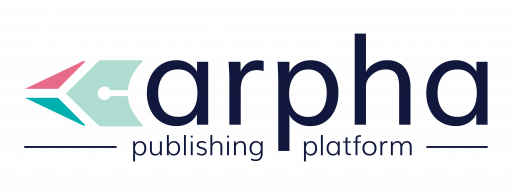Two years ago the publishing platform, developed by the scholarly publisher and technology provider Pensoft, welcomed Moscow State University’s journal Population and Economics. Now, ARPHA announces the transfer of a second academic title published by the institution’s Faculty of Economics. The peer-reviewed, open-access BRICS Journal of Economics covers key economic issues of middle-income developing countries, primarily BRICS countries.
BRICS Journal of Economics is a fairly new scientific outlet launched in 2020 with the aim to provide a better understanding of the specifics of the BRICS countries (China, Russia, Brazil, India, and South Africa), as well as a broader knowledge about the prospects emerging in those constantly growing economies. It publishes four issues per year, where all articles are submitted in English and undergo double-blind peer review. Thanks to sponsorship available from one of the leading universal banks of Russia: VTB Bank, it runs a Diamond Open Access policy, where neither reading, nor publishing incurs any costs to readers and authors.
With its move to ARPHA, BRICS Journal of Economics is to utilise the whole package of ARPHA Platform’s signature services, including a fast-track, end-to-end publishing module, designed to appeal to readers, authors, reviewers and editors alike.
Soon, the journal will relaunch on its brand new ARPHA-powered website, where authors, editors and reviewers will find and track the progress of all of their tasks, files and correspondence, in addition to the infrastructure needed to complete every step along the editorial process. Put simply, once submitted, a manuscript has no need to leave the online, collaborative-friendly platform all the way to its publication, dissemination and archiving.
On their part, the readers of BRICS Journal of Economics will enjoy the publications in a conventional PDF format that allows easier storage, as well as semantically enriched HTML. The latter ensures a complete and mobile-friendly reading experience by relying on easier navigation and plenty of related additional linked information within the article’s text. Meanwhile, the third utilised format: the machine-readable JATS XML will make the publications much more visible and findable to both humans searching on the Internet and algorithms mining the web.
Amongst the other advantages provided by the journal is a full suite of various metrics designed to track the usage of both articles and sub-article elements, such as figures and tables, at any time.
“We are delighted to extend our collaboration with the Moscow State University’s Faculty of Economics by taking care after the technological advancement of BRICS Journal of Economics. This particular journal is undoubtedly serving a fantastic role in the community by filling a niche in the study of Economics, and it is an honour for us at ARPHA and Pensoft to aid its reach to the international public,”
says Prof. Dr Lyubomir Penev, founder and CEO at ARPHA and Pensoft.
Additional information:
About Faculty of Economics, Lomonosov Moscow State University:
Founded in 1941, the Faculty of Economics continues the centuries-old tradition of economic education in Russia, being one of the leading university-level centres in the field of Economics.
The faculty combines fundamental education and professional training in order to develop its students’ analytical skills and creative thinking, thereby helping its graduates to adapt quickly and successfully to the requirements of any job in the field of economics.
About Lomonosov Moscow State University:
Founded in 1755 by Russian polymath, scientist and writer Mikhail Lomonosov, the university is currently the highest-ranking Russian educational institution, according to the 2018 QS World University Rankings. It is also considered to be the most prestigious university in the former Soviet Union.
Every year Moscow University enrolls about 4 000 international students and postgraduates from all over the world.


